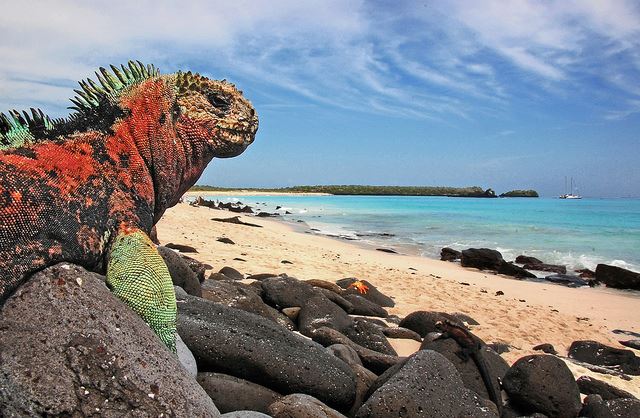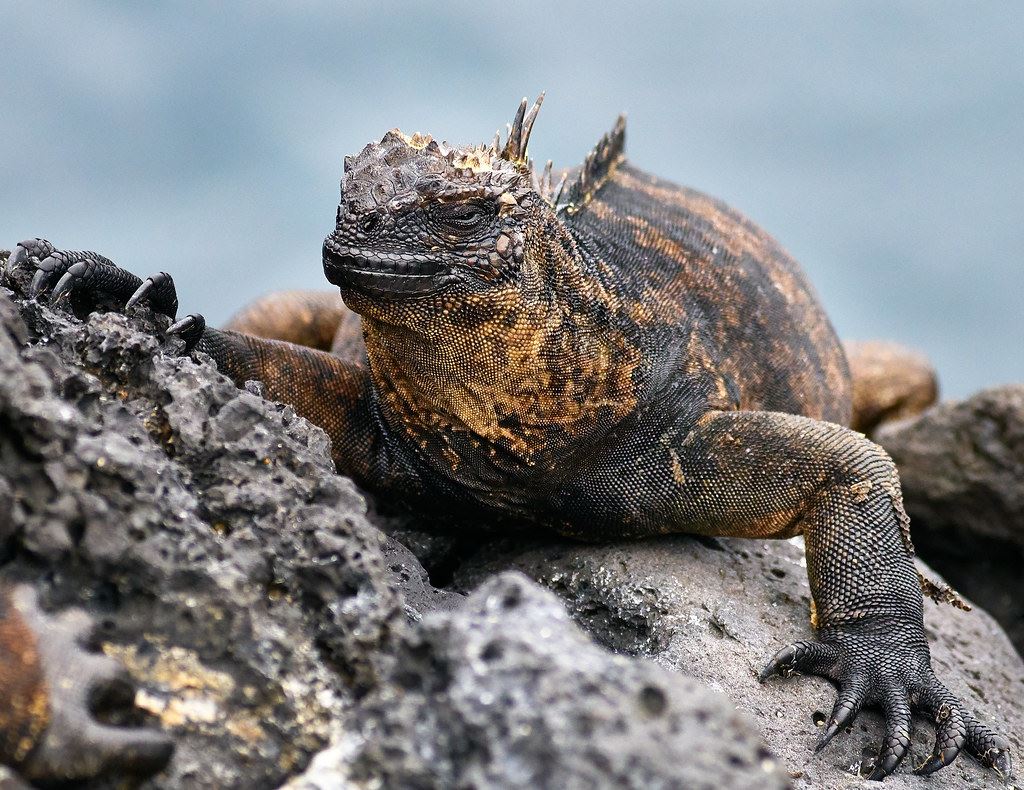


If you’re planning (or dreaming of) a Galapagos vacation, you’re almost certainly interested in the myriad endemic species which call the archipelago home. There’s no denying that the Galapagos tortoises are the islands’ most famous representatives, but the marine iguana comes a close second.
Every visitor to the Galapagos Islands is guaranteed to see hundreds if not thousands of them, and if you know nothing about them you may well, like Darwin before you, view them as “large, disgusting, clumsy lizards”. This would be a pity, however, as they are fascinating creatures which are unique in many ways. Read on to find out more…
What sets them apart?
In the system of biological classification they have a genus all to themselves and are endemic to the Galapagos Islands.
They aren’t just only seagoing iguanas in the world, they are in fact the only seagoing lizard of any type.
They can hold their breath under water for up to 30 minutes.
During times of famine (El Niño years), marine iguanas don’t just get thinner, they get shorter too. When La Niña takes effect they return to their former weight and length!
Section Type: standardWidthImageS
Picture: Andrea Westmoreland

General appearance
Marine iguanas vary in color from black to gray (dark colors aid heat absorption), while during breeding season males take on red and green tinges caused by the type of algae which is dominant in their diet. The males are bigger than the females, but the size of different subspecies varies wildly. The smallest specimens measure 20 inches and weigh 1 pound, while the largest can weigh as much as 22 pounds and measure five-and-a-half feet in length!
When compared with Galapagos land iguanas, they are smaller and have shorter snouts (for feeding on algae) a longer flattened tail (for more effective swimming) and long curved claws for clinging onto rocks in strong currents.
The 6 subspecies
As with many Galapagos species, different subspecies of marine iguana occur on different islands. There are six subspecies which vary greatly in size. The largest occur on Isabela and Fernandina Islands and the smallest are found on Genovesa.
Section Type: imageOnLeftParagraphToRight
Another major difference between the subspecies is the color changes undergone by males during breeding season:
Española and Floreana: red and teal-green
Santa Cruz: red and black
Fernandina: dull green and red

Evolutionary origins, diet and behavior
Scientists believe that the iguanas arrived on rafts of floating vegetation from mainland Ecuador or Peru. Current consensus is that the Galapagos land and marine iguanas share a common ancestor, and that the two different species evolved once already on the archipelago.
Marine iguanas evolved so as to be able to feed on the algae that live in tidal and intertidal zones. Although they are famed for their diving abilities, about 95% of feeding actually takes places in the intertidal zones which are exposed during low tide.
They are extremely graceful and agile in water, but they do get very cold. After a lengthy swim they have to bask in the sun for a considerable period to warm up.
Section Type: standardWidthImageS
Picture - Pedro Szekely

Depending on the island and the subspecies, breeding takes place between November and January. During this season, males starve themselves and engage in brutal fights over the prime breeding territories.
Once mating has taken place, females lay their eggs in complex burrows and guard them from sabotage by rival females. Incubation takes about 95 days, with thousands of eggs hatching simultaneously. This gives the hatchlings a greater chance of survival, as they are extremely popular fodder for snakes, hawks, gulls and owls as well as feral dogs and cats.
Thanks to Ben Baker for the title image of this blog.
Section Type: cta
If this has piqued your interest, why don’t you come and see the marine iguanas for yourself with SA Expeditions? They occupy virtually every rocky stretch of coastline in the Galapagos, so you’re guaranteed to add them to your life-list.


Copyright © 2025 SA Luxury Expeditions LLC, All rights reserved | 95 Third Street, 2nd floor, San Francisco, CA, 94103 | 415-549-8049
California Registered Seller of Travel - CST 2115890-50. Registration as a seller of travel does not constitute approval by the state of California.










